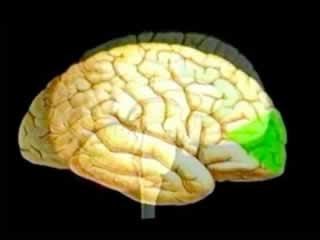Epileptic Disorders
MENUFrontal lobe seizures Volume 3, issue 4, December 2001
ABSTRACT
This video teaching course presents several patterns of frontal lobe seizures recorded in a number of Italian Epilepsy Centers*. The general features of frontal lobe seizures are outlined in the introduction. Sixteen video-EEG sequences involving 10 different patients are shown. A short presentation of the clinical history precedes each case report.
The electroclinical characteristics of seizures implicating the frontal lobe are extremely variable. According to the literature, general characteristics allowing differentiation between seizures of different topography include: appearance of seizures in clusters; seizures predominantly nocturnal or while the patient is falling asleep; short duration of each episode (approximately 30 s); abrupt onset and end; relatively short post-ictal phase, when present; frequent secondary generalization and falls; frequent subjective sensations, usually difficult to describe; impairment of consciousness is not a constant feature; episodes of status are frequent; differentiation from pseudo-seizures may prove to be difficult.
When confirmation of the epileptic nature of paroxysmal phenomena is needed, video-EEG recordings may be of some help.
Possible subjective manifestations are: cephalic and neuro-vegetative (even epigastric) manifestations, as well as "pensée forcée", fear, olfactory hallucinations, non-lateralized visual disturbances. Motor manifestations include tonic, dystonic, postural, oculocephalic deviations and falls.
Verbal and more often gestural automatisms can be complex, very brief and often violent, but elementary automatisms, such as automatic hand and mouth movements, or bimanual and pedaling movements, are also frequent.
In this video teaching course, we first present seizures featuring minimal motor signs, followed by seizures with a more complex semiology. The most significant clinical and EEG features are discussed. (Published with videosequences.)
KEY WORDS: frontal lobe seizures, epilepsy, clinical symptoms, video-electroencephalography
Videosequence captions
Types of seizures presented
Seizure No. 1
B.R. 17 yrs
Pseudo-absence of frontal origin.
Seizure No. 2
B.R. 17 yrs
Unilateral oculo-cephalic deviation.
Seizure No. 3
L.V. 14 yrs
Bilateral dystonic posturing with facial modifications.
Seizure No. 4
S.S. 28 yrs
Gestural automatisms without impairment of consciousness.
Seizures No. 5 and 6
M.L. 11 yrs
Contralateral oculo-cephalic and trunk deviation with unilateral gestural automatisms.
Seizures No. 7, 8 and 9
A.P. 42 yrs
Three episodes with unilateral oculo-cephalic deviation and motor aphasia.
Seizure No. 9
L.T. 15 yrs
Right motor seizure with contralateral gestural automatisms.
Seizure No. 10
L.M. 35 yrs
Hypertonic asymmetric bilateral nocturnal seizure.
Seizure No. 11
L.M. 35 yrs
Dystonic asymmetric nocturnal seizures of frontal mesial origin.
Seizure No. 12
M.C. 40 yrs
Gestural automatism without loss of consciousness and initial epigastric subjective manifestation.
Seizure No. 13
T.C. 38 yrs
Hypermotor seizure.
Seizure No. 14
L.M. 25 yrs
Hypermotor seizure with enuresis.
Acknowledgements:
We are particularly grateful to all those patients who gave us permission to use the video recordings for publication and teaching purposes.
Copyright of the video recordings remains with the original rights holders. Published in 2000 by Medicalvideo, Milano, Italy, with an educational grant from Sanofi-Synthelabo Italy.
* The seizures presented in the videotape were recorded by:
1. E. Casiraghi, S. Francione, R. Mai, M. Rossi, L. Tassi (Centro per la Chirurgia dell'Epilessia "Claudio Munari", Ospedale Niguarda, Milano).
2. F. Bisulli, F. Bisquoli, C. Grassi, P. Tinuper (Centro Epilessia, Clinica Neurologica, Bologna).
3. P. Bonanni, A. Ferroni, R. Guerrini, A. Volzone (Divisione Universitaria Neuropsichiatria Infantile IRCCS Stella Maris, Pisa).
4. C. Bertin, M.P. Canevini, R. Canger, V. Sgrò, A. Vignoli (Centro Regionale Epilessia, Ospedale San Paolo, Milano).
5. G. De Gennaro, P. Quarato (Centro per la Chirurgia dell'Epilessia, Istituto Neuromed, Pozzilli - Isernia).
Received September 3, 2001 Accepted November 14, 2001


